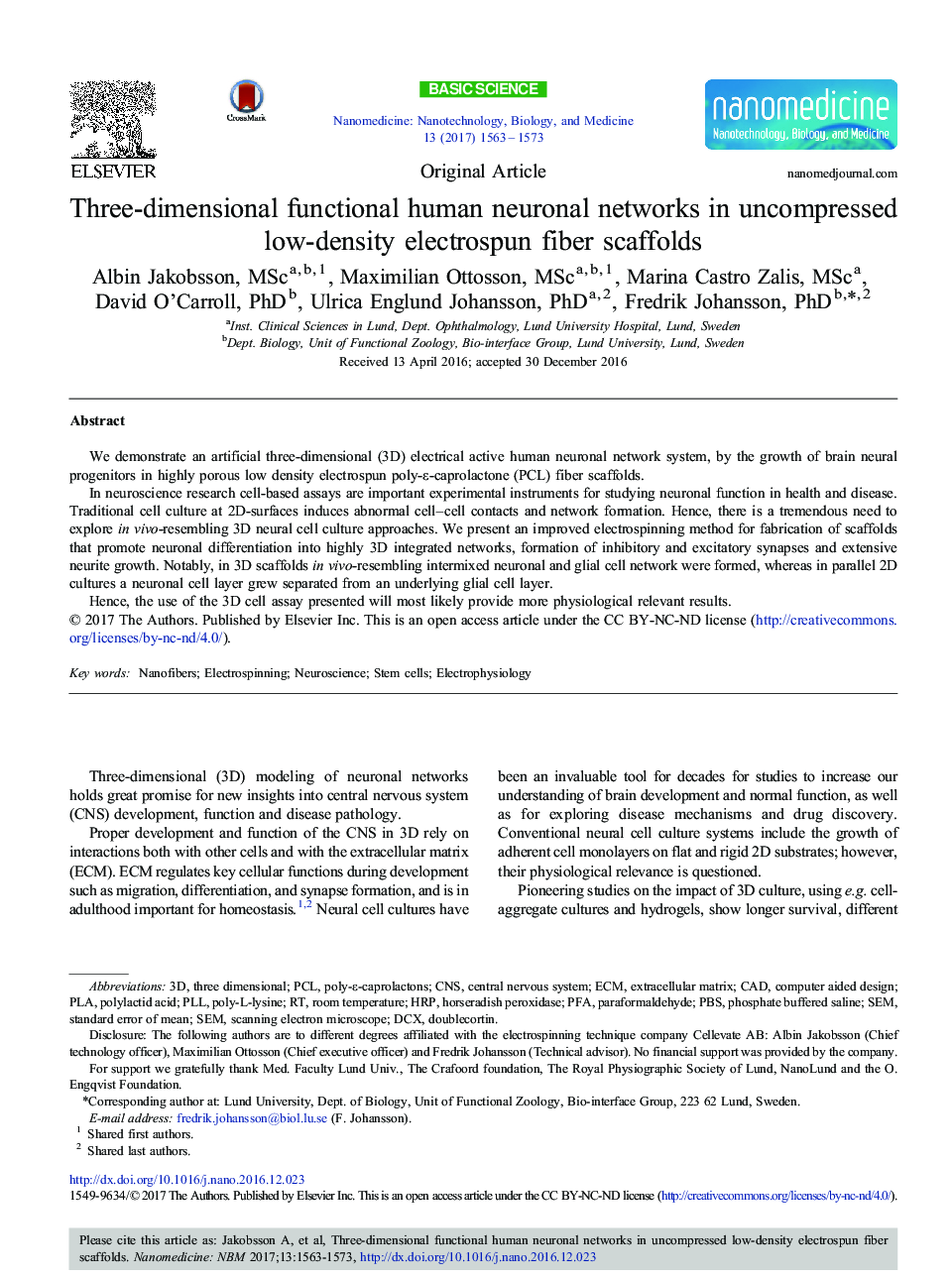| کد مقاله | کد نشریه | سال انتشار | مقاله انگلیسی | نسخه تمام متن |
|---|---|---|---|---|
| 5033053 | 1370005 | 2017 | 11 صفحه PDF | دانلود رایگان |
We demonstrate an artificial three-dimensional (3D) electrical active human neuronal network system, by the growth of brain neural progenitors in highly porous low density electrospun poly-ε-caprolactone (PCL) fiber scaffolds.In neuroscience research cell-based assays are important experimental instruments for studying neuronal function in health and disease. Traditional cell culture at 2D-surfaces induces abnormal cell-cell contacts and network formation. Hence, there is a tremendous need to explore in vivo-resembling 3D neural cell culture approaches. We present an improved electrospinning method for fabrication of scaffolds that promote neuronal differentiation into highly 3D integrated networks, formation of inhibitory and excitatory synapses and extensive neurite growth. Notably, in 3D scaffolds in vivo-resembling intermixed neuronal and glial cell network were formed, whereas in parallel 2D cultures a neuronal cell layer grew separated from an underlying glial cell layer.Hence, the use of the 3D cell assay presented will most likely provide more physiological relevant results.
Graphical AbstractHere we present an artificial, three dimensional (3D), electrically active human neuronal network system, by culture of neural progenitors in highly porous, low density electrospun poly-ε-caprolactone (PCL) fiber scaffolds.Compared to culture at traditional 2D surfaces the 3D scaffolds significantly promoted longer neurite growth. Notably, the 3D scaffolds supported formation of in vivo resembling intermixed neuronal and glial cell complexes, whereas growth at 2D surfaces rendered a neuronal cell layer separated from an underlying glial cell layer.We conclude that 3D cell culture systems using nanofiber meshes most likely provide more physiological relevant results and hold great promise for studying neuronal function in health and disease.179
Journal: Nanomedicine: Nanotechnology, Biology and Medicine - Volume 13, Issue 4, May 2017, Pages 1563-1573
